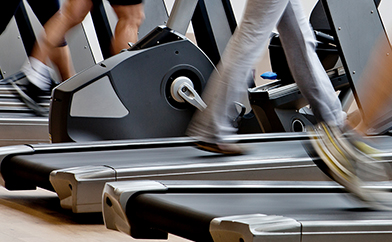Adult Sports – How to Gain with No Pain
With so much of our workday spent seated in front of a computer, the thrill of outdoor sports can be quite enticing. Though there are many health benefits to getting more physical activity, for some adults these benefits can come at a price: sports injuries or fitness injuries.
The term “sports injuries” refers to injuries that most commonly occur during athletic sports or exercise, says Patrick F. Leary, DO, FAOASM , FACSM, Director of the LECOM Sports Medicine program in Erie, Pa. While these types of injuries are sometimes due to accidents, they can also be the result of improper equipment, poor training practices, lack of conditioning, or insufficient warm-up and stretching.
The most common types of sports injuries include:
Sprains – A stretch or tear of a ligament, the band that connects one bone to another.
Strains – A twist, pull or tear of a muscle or tendon, sometimes caused by over stretching.
Hip, Knee and Foot pain associated with Osteoarthritis
Fractured bones – Either acute (when there is a clean break in the bone) or stress (a small crack in the bone caused by repeated impact, typically in the legs and feet).
Tears of the ligaments – Tears often occur to the ligaments that hold the knee joint together.
Tears of the tendons – Tendons support joints and allow them to move. Achilles tendon injuries, affecting the tendon that connects the calf muscle to the back of the heel, are the most common and are extremely painful.
According to Dr. Leary, as the body grows older, muscle turns to fat and becomes more susceptible to these types of injuries.
The largest contributing factor to adult sports injuries is that adults may not be as agile and resilient as they were when they were younger, explains Dr. Leary. Injuries can also occur when a person moves from an inactive to a more active lifestyle too quickly.
To prevent injuries, Dr. Leary recommends that adult athletes take the following precautions:
Accept your body’s limits. You may not be able to perform at the same level you did when you were a teenager. Modify activities as necessary.
Don’t be a “weekend warrior.” Instead of packing a week’s worth of activity into your weekend, try to maintain a moderate level of activity throughout the week.
Use proper form for your sport. If you learn the correct form for your sport, you can reduce your risk of “overuse” injuries such as tendinitis and stress fractures.
Use proper equipment and footwear. Braces and helmets are examples of safety gear designed to protect your body, as are proper fitting grips on clubs and racquets. Wear shoes appropriate to activities.
Give your body time to adapt. Don’t rush into a high-intensity activity; rather, increase your exercise level gradually. Less weight, more repetitions.
Mix it up. Cross-training, which involves cardiovascular, strength training, and flexibility exercises, reduces injury while promoting total body fitness. Utilization of aqua therapy is an effective adjunct for injury prevention and treatment of injuries.
Proper Nutrition and Hydration. Drink plenty of liquids. If you live north of Atlanta, have your Vitamin D levels checked. Sleep is essential for good health. Get between six and eight hours of sleep per night. Exercise for at least 30 minutes every day.
The good news is that most sports injuries can be treated effectively, says Dr. Leary. He adds that the majority of people who suffer injuries can return to a satisfying level of physical activity afterwards. Usually patients can selectively exercise their way out of pain without medication or surgery.
As long as you take the precautionary steps, integrating sports into your weekly routine can have great health benefits, he concludes.
Preventive medicine or wellness medicine is just one aspect of care osteopathic physicians (DOs) provide. DOs are fully licensed to prescribe medicine and practice in all specialty areas, including sports medicine. DOs are uniquely trained to consider the health of the whole person and use osteopathic manipulation and evaluation to help diagnose and treat their patients. The body can heal itself if we let it.

